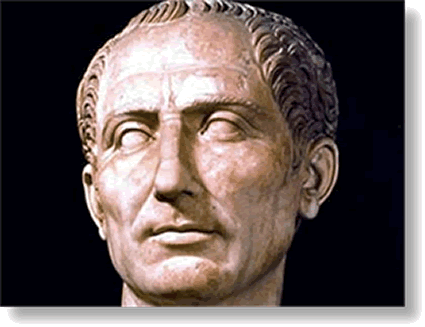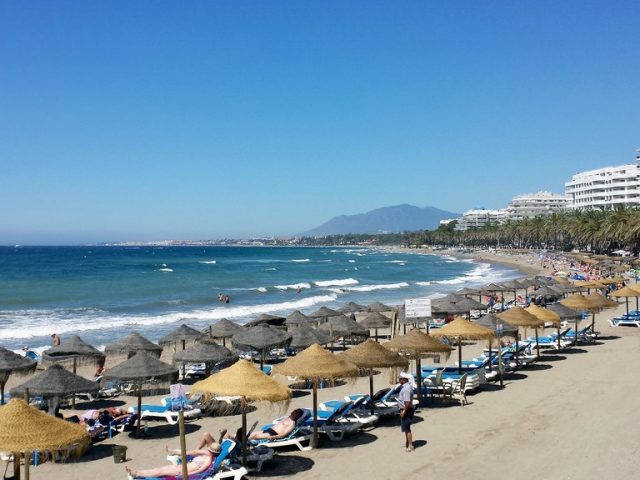- Have any questions?
- +34 951 273 575
- info@allaboutandalucia.com
Famous since Caesar’s days: Casares

Mary Beker: My Gaucin
August 10, 2016
Benalmadena: Three for the price of one
August 10, 2016By Tom Powell,
ONE was a mighty Roman Emperor, the other a Hollywood superstar.
It’s hard to imagine Julius Caesar and Brad Pitt having a whole lot in common, other than fame, but both were drawn to the magical white village of Casares.
Hollywood heart-throb Pitt and his partner actress Angelina Jolie were spotted visiting the stunning town last year when they took a side-trip to the mountain enclave, perched between two majestic peaks, celebrated for its vultures and eagles.
The celebrity couple were so enchanted, they popped into local art gallery, Studio 54, to purchase two paintings as mementos of their visit, perhaps to hang in their French chateau where they were married only last month.
“They spent some time looking at the paintings before purchasing two,” recalled the gallery’s owner David Espana, a former paparazzi photographer, no less, who was forbidden from taking pictures.
“They were really very nice, unassuming, but then a lot of celebrities are.,” he said.
Whereas the Pitt-Jolies arrived with an entourage of five, apparently staying at the town’s stunning five star hotel Finca Cortesin, Julius Caesar did it in even more style.
Flanked by an entire army of bodyguards and soldiers he swept into the village on various occasions in 60BC allegedly to rid himself of an unpleasant skin complaint at the famous nearby Roman sulphur baths of La Hedionda.
Camping, one would guess, on the nearby coastline, he left such an impression on the village that it was named Casares in his honour.
Incredibly, the baths remain a tourist attraction to this day, although it requires a certain bravery to put up with the stench of rotten eggs emanating from the sulphurous waters.
The spa is named La Hedionda (Spanish for ‘foul-smelling woman’) for good reason! However, it’s worth a visit for the chance to enjoy a rejuvenating exfoliation with mineral-rich mud and relax in the turquoise waters of these atmospheric stonework baths.
Many other celebrities, including Patrick Stewart of Star Trek, pop star Peter Andre, Axl Rose from Guns and Roses, not to mention British TV star and former politician Robert Kilroy Silk and former Santander Bank boss Emilio Botin, have been similarly attracted to this vertiginous village of just 3,000 inhabitants, and it’s not hard to see why.
Within easy reach of the coast’s bright lights and attractions yet a world apart, it is the most picturesque ‘pueblo blanco’ for miles around and one of the most photographed.
It is also famously the birthplace of Blas Infante, ‘the father of Andalucian nationalism’ who was executed by Franco’s forces at the beginning of the Spanish Civil War, dying with the words ‘Long live free Andalucia!’ on his lips.
Arab castle walls encircle the quaint old town, where the central Plaza de Espana is the perfect spot to enjoy a drink and tapas.
But take the cobbled street up to the castle to discover the real beauty. From the ruins you can see for miles, to Gibraltar and Morocco in one direction and to the green hills of Cadiz in the other, where white wind turbines speckle the landscape like daisies.
The 11th century castle is worth a visit but, curiously, the serene cemetery is also a must, with its breathtaking views and wall niches decorated with wreaths, nosegays of wild flowers and poignant plaques.
A new cultural centre dedicated to Blas Infante stands alongside it, in what was formerly a church. The village house where the poet and politician was born is now a museum dedicated to his life.
The village itself can seem deserted on a summer afternoon – indeed the town hall has done little to promote itself properly as a tourist destination – but when the sun drops behind the peaks it swells with people in the streets and drinking on terraces.
There are actually very few shops worth poking your head into, but the butchers sell the tastiest chorizo and salchichon for miles around.
The surrounding countryside is probably the biggest draw. It is a veritable walker’s paradise, with many routes departing from the village, taking in the sights of the Sierra Crestellina, a 478-hectare natural park named after its dramatic mountain crests which are so inaccessible, only high-flying raptors like eagles and Griffon vultures can reach them.
There is more than 200km of public footpaths navigating the area leading you through 200 million years of geological and human history.
Well signposted and varied, taking in a number of its best restaurants if you plan your route carefully, they are a real delight, particularly in Autumn and Spring.
But Casares has another secret that can be spotted from way up here – beaches! Drop down to Casares Costa and head for lovely Playa Ancha and its 16th century watchtower, the Torre del Sal (Salt Tower), where the double headland provides a great location for snorkelling.
“I go snorkeling on the headland almost every day and it’s always amazing, exploring under the water is different each time,” said 20-year-old James Partington, a resident of Marina del Casares.
“Casares is perfect for outdoor activities, with the beautiful mountains and the great coastline – the best of both worlds.”
It gets busy in summer, when there are outdoor markets, night cinema on the beach and the hordes walk up from nearby Sabinillas, but outside high season, you can have the beach to yourself.
Best of all make a point of visiting for the eve of San Juan – the longest day of the year in June – when it is buzzing with life and light.
Celebrated with an almighty bonfire on the beach, at midnight fireworks light up the sky as revelers head down to the sea for a ritual cleansing.
Traditionally, washing your face and feet three times will grant you three wishes and a happy year ahead.
I did it this year… happy times to come.
Swooping down for lunch, vultures in Casares
IT is almost impossible to spend a day in Casares without spotting at least one large bird gliding overhead.
And when we say large, we mean very, very large, for the big colony of vultures that lives nearby have wingspans of up to 2.8m.
These scavengers are majestic griffon vultures, who have made their home in limestone formations on the western side of Sierra Crestellina.
Circling around overhead, they keep a watchful eye out for dead animals and for the farming community. The vultures are generally helpful for clearing away carrion, although they have also been known to carry off the occasional new-born goat.
The vultures have become very much a part of Casares, featuring in everything from art all the way through to school-yard tales, as children at the local school point in delight as one of them swoops past.





